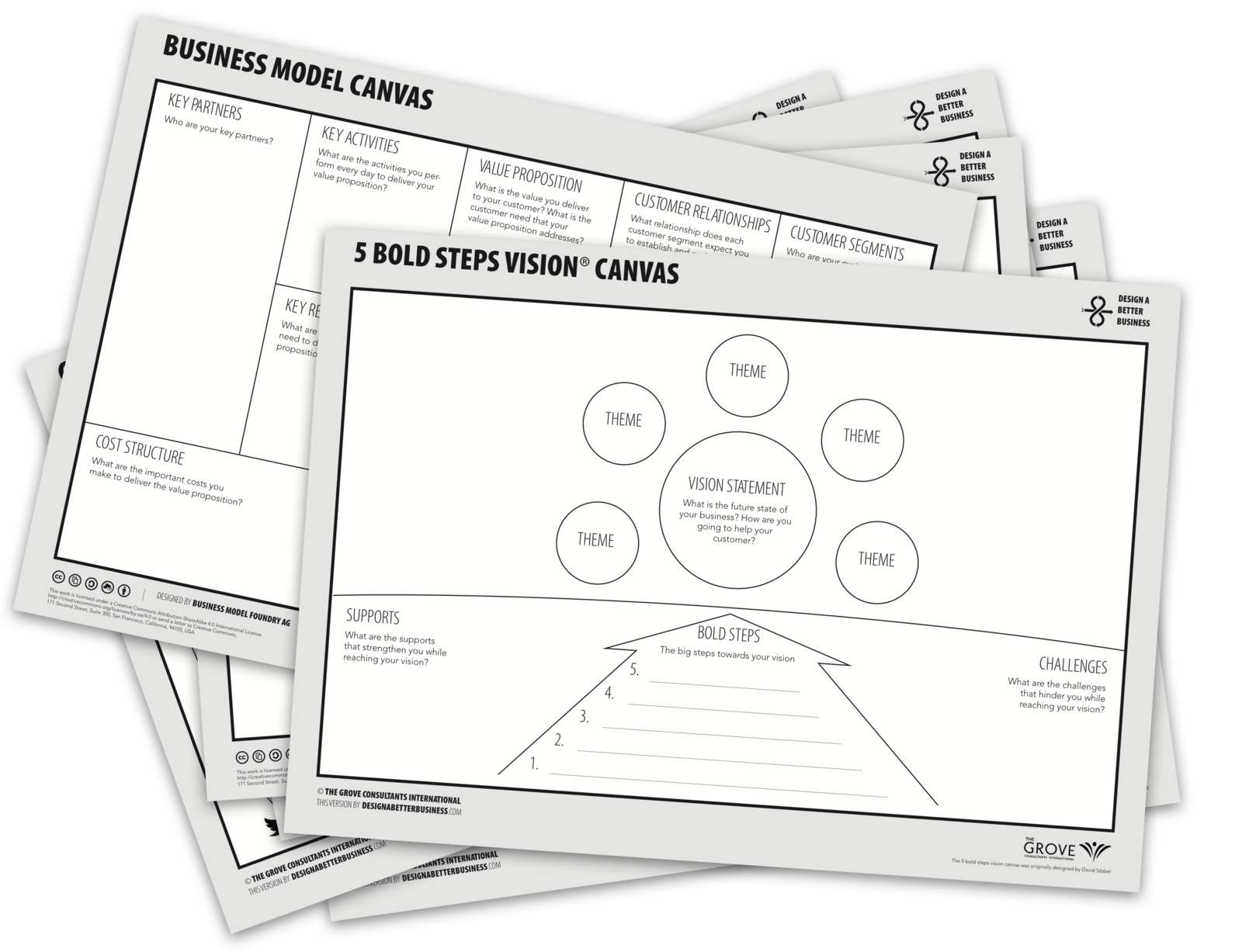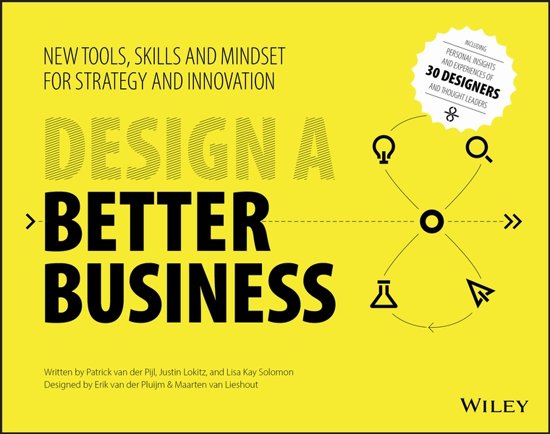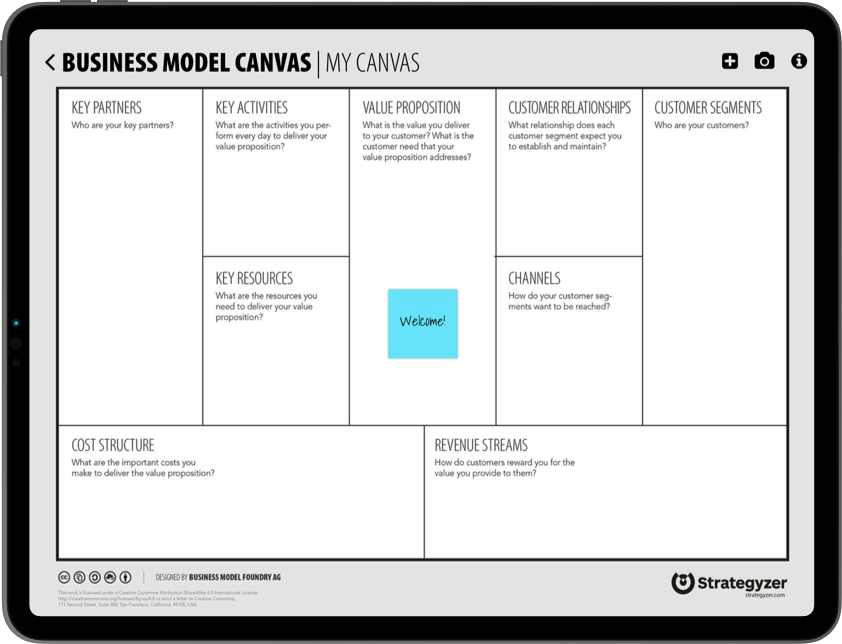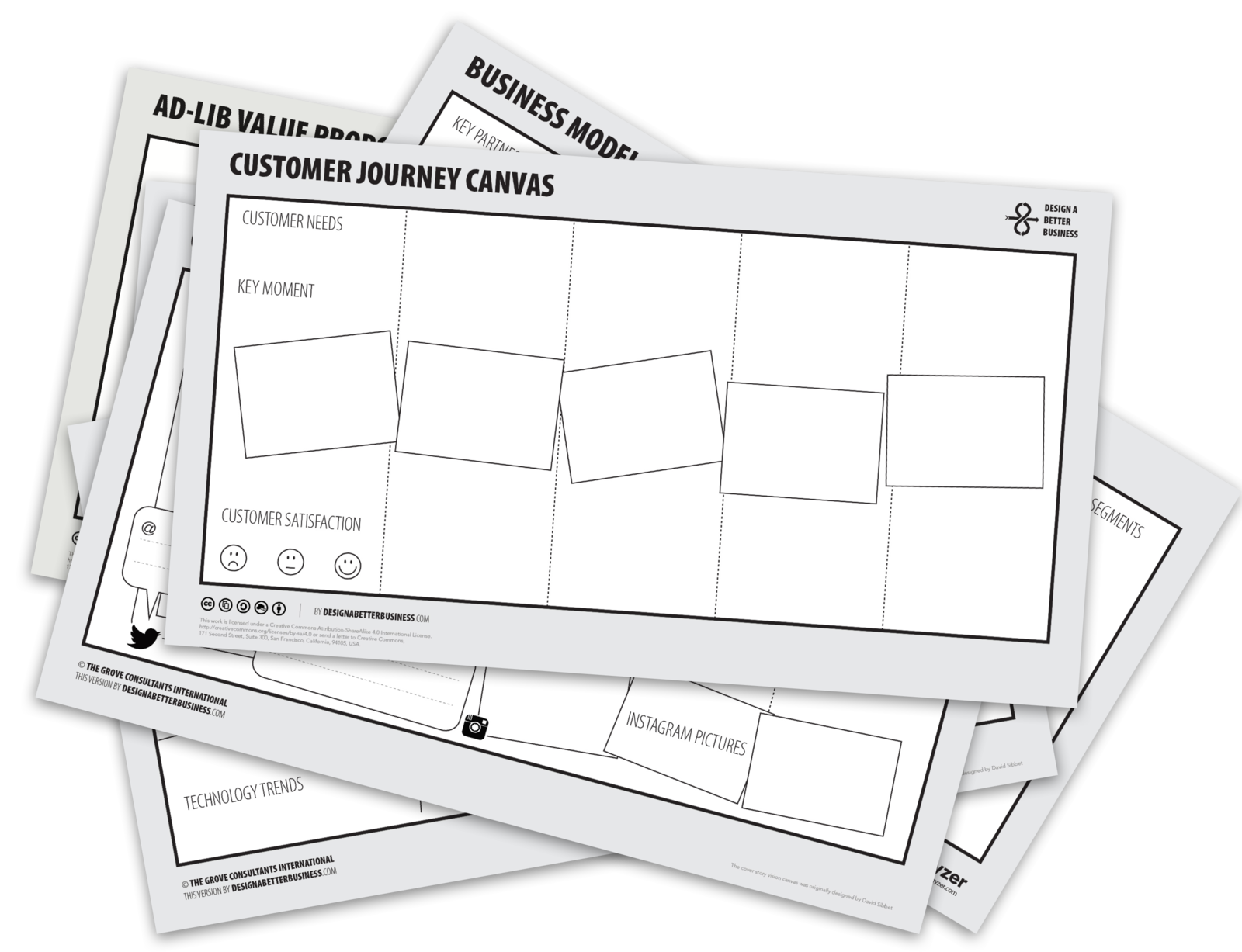All 20+ canvases from the book Design A Better Business, as print ready PDFs on A4 size (29.7x21 cm, 11.7x8.3 in), for free!
Storytelling Canvas
Introduction
We're all born storytellers. Stories are how we have shared knowledge and information since the dawn of humanity. Our brains are shaped by storytelling. Still, not everyone can aspire to be the next Hemingway from the get go. But don't be afraid: stories can be designed! The storytelling canvas helps you to do just that!
Overview
| Time | ± 45 minutes |
| Difficulty | 4 / 5 |
| People | 3 - 5 |
| Author | Design A Better Business |
| Copyright |
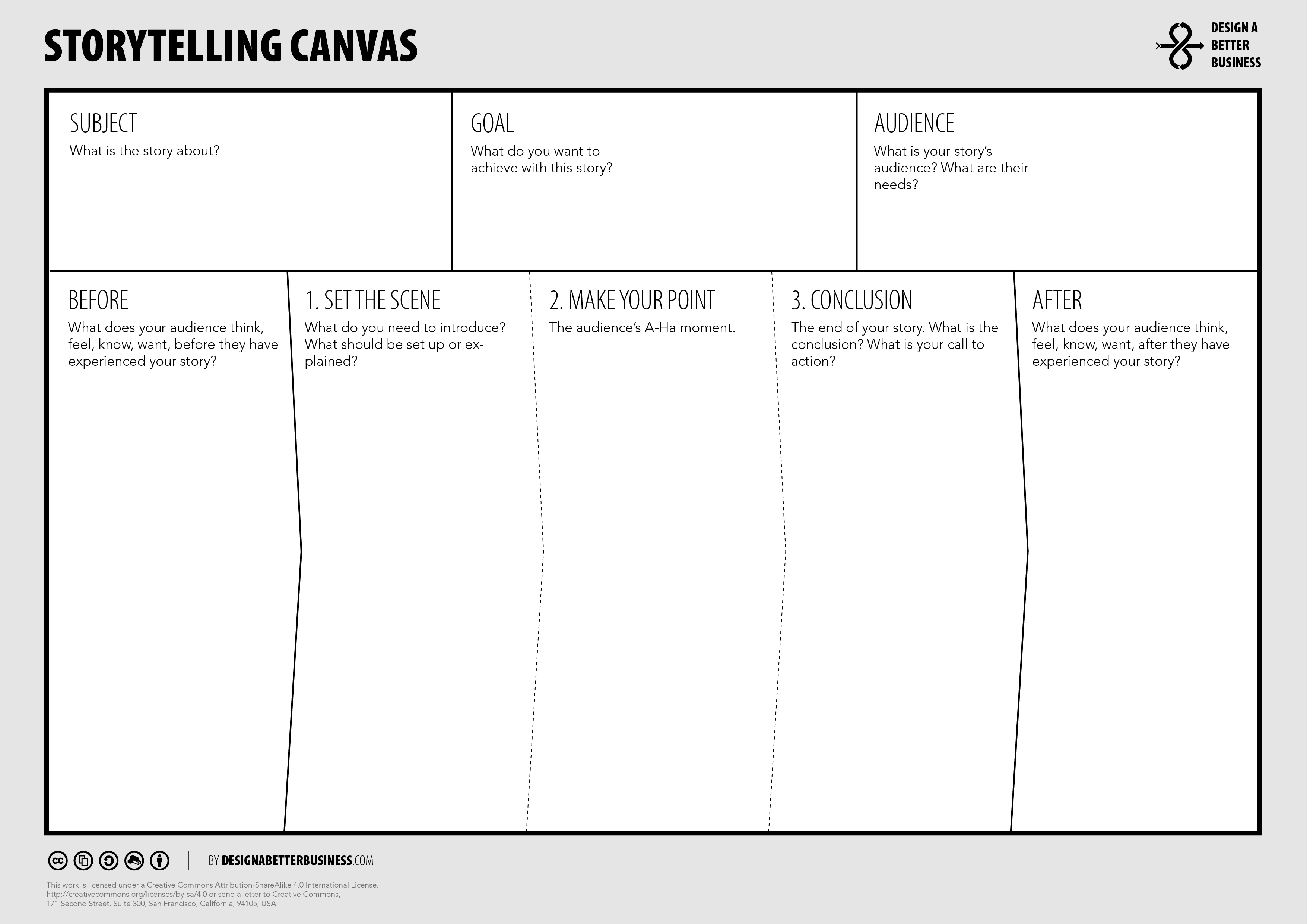
How To Use the Storytelling Canvas
We created the storytelling canvas to make it easier to construct a story that people care to listen to. The PowerPoint presentations you give probably lack the emotional depth and impact you want to build in a story. However, the stories we design can be told through the medium of PowerPoint!
Like the other tools in this book, the story canvas allows you to collectively design stories that resonate: by harnessing visual, engaging, insightful, controlled, and inspiring elements.
Tool Overview

Subject What is the title and subject of your story?
Goal What is the goal you want to achieve? Why are you telling the story?
Audience Who is your audi- ence? Map them as a persona!.
Before What do your audience members feel, think, know, want, etc. about the subjects in your story before they hear it?
Set the Scene Create a context (based on emotion, ethics, or facts) that helps the audience get in the mood of things.
Make your Point What is the main message you want to come across which will help support a change of heart with the audience?
Conclusion What are the arguments, facts, and anecdotes in your story? Where are you going to place them?
After Do audience members feel, think, know, want, etc. after they hear the story? Be specific!
Step-by-step guide
1 Before you start
What do you want to achieve with your story? Why do you want to tell it?
2 What do you want to achieve?
What you’ll need to understand when designing your story is that there must be a goal. What do you want your audience to know, feel, or do afterwards? Your goal needs to be quite selective: you can make only a few points in your story!
3 Who are in the audience?
In addition to knowing what you want to achieve, you need to understand who your audience is. What do they care about? Why should they listen to your story? Different audiences need different stories; one size does not fit all! You might even use the right side of the value proposition canvas or a persona canvas to map the audience. Test your assumptions: while designing and telling the story, revisit your persona, and update it with what you learned.
Tip! If you are pitching to an investor, the customers of your product are not necessarily the audience of your story. Your investor has a totally different set of needs than your customer.
4 Map the audience's before and after state.
In order to be meaningful, your story should change your audience in some way. Their beliefs, emotions, or knowledge should be transformed by the time you are finished.
First, ask yourself: How does your audience feel about your goal before they heard your story? Do they care about it already? And then, think about what you'd like them to think about once you’re through? Trying to define it from the audience’s perspective is key.
5 Create the story
Try to come up with arguments that may change their minds, and make sure you have a list of rational, emotional, and ethical points. What is your “proof”? Do you have examples? Anecdotes? Find the ones that will resonate with your audience.
There are different key ingredients that you can use to plot your audience's journey through the story. With your team, spend time to come up with a good number of these. Don't bother about the order yet, just try to find as many as you can.
Checklist
- Facts & figures. These appeal to logic but can be boring.
- Anecdotes. These give personality and a sense of truth to the story.
- Examples. Halfway between facts and anecdotes, these bring clarity.
- Arguments. What logical pros and cons are there for this story? What about your point of view?
- Fun / emotional. What are things you and your team are enthusiastic about? or angry? happy? Try to find a mix.
- A-ha moment. The one main point you want to make with the story.
Design A Better Business Newsletter
Sign up for the Design A Better Business Newsletter and keep up to date with events and news!
